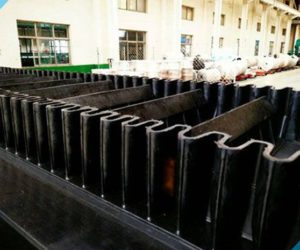A side wall belt conveyor is a type of conveyor that many companies use to transport materials from one location to another. In this article, you will learn about how these belts work and what they are used for in the process.
Side-belt conveying is a form of mass transportation where bulk materials are transported from one place to another. There are several different variations for side-belt conveyors at https://www.monsterbelting.com/sidewall-conveyor-belts/, including straight belt conveyors, span belt conveyors, and vibrating rollers. For the project, you will use a straight belt conveyor that moves materials from one station to the next at a constant speed.

When materials are moved through a belt conveyor, the belt moves the material in a continuous loop. The belt is usually horizontal, but it can also be vertical. The belt is attached to a moving pulley on one side and to a stationary pulley on the other side.
When the belt moves, it creates a shearing force that pulls the materials towards the moving pulley. The force of the belt pulling on the materials pulls them through the conveyor. The belt continuously moves, so this shearing force is constant. The speed of the pulleys also changes constantly, so they impart a circular motion to the belt. This continuous circular motion occurs every time you turn on a belt conveyor.
The material flows through the conveyor at a uniform velocity in one direction, but eventually, it slows down and deposits its load in one place or another along its path. As materials flow through a side-belt conveyor, they are moved uniformly from station to station until they pick up their load and deposit it somewhere else along the belt's route.
In order to get material moving at a faster rate, side-belt conveyors are used in conjunction with heavy-duty pulleys that move the belt at different speeds along its entire length. Side-belt conveyors require additional hardware installations: gears and pulleys, but they produce higher production rates and reduced labor costs over their roller counterparts.The speed of a belt is controlled by an endless rope or chain attached to both ends of the conveyor.
